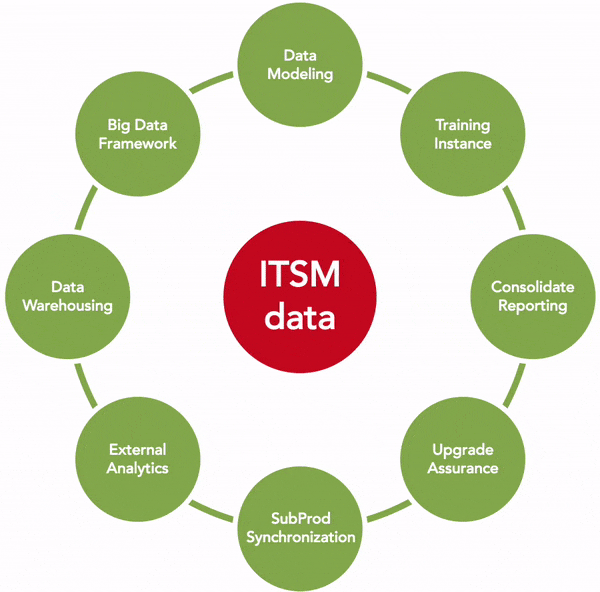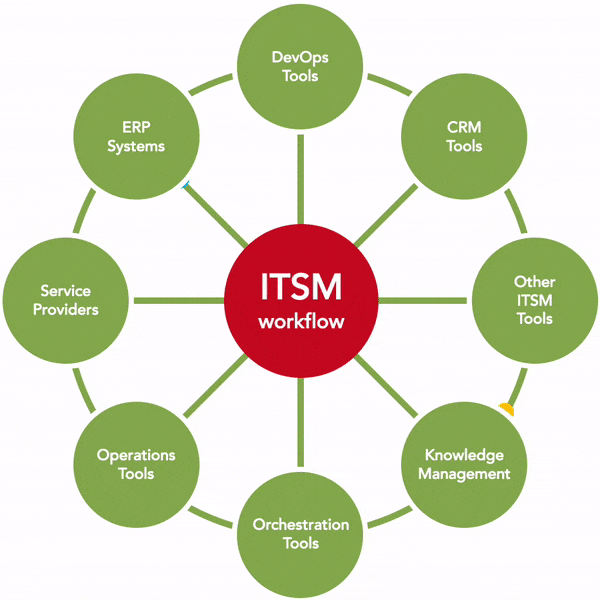
Data Integration
Data integration is all about moving data from one place to another. This often involves large quantities of data, and the integrations are typically one-way – starting from an ITSM application. Data integration is used for things like replicating prod to subprod instances, syncing data into a reporting database, upgrade assurance or moving data into a data warehouse for analytics or BI work.
Data integration enables mass data synchronization between endpoints - either in batch updates, or dynamically in real-time.
Service Integration
Service integration enables inter-application workflow. Service integrations typically exchange smaller volumes of data, but that data is part of an executing workflow process. These integrations could be between enterprise applications (like ITSM tools, development tools, CRM tools, and more) or they may connect you to external service providers. These are two-way, real-time integrations – since synchronization is required in both directions, and must include journal fields, related records, and attachments.

But don't just take out word for it! Listen to what a couple of our customers have to say about Perspectium enterprise integrations
There are different ways to move data between systems
... but they are NOT all the same.

The swivel chair approach is used in many companies. Someone reads data from an internal system, and re-enters it in another tool. It may be transactional (like incident to request) or batch (import CMDB from discovery tool) … but either way, its inefficient, error-prone, and a risk to meeting response and resolution SLAs.

Businesses with large IT organizations often turn to the do-it-yourself approach. Writing your own integrations (or having a consultant do it) might sound like a cheaper way of connecting your applications, but anyone who has done it will tell you otherwise. Creating and maintaining custom integrations is both inefficient and expensive. And what happens when the person that created the integration is no longer available?

Integration toolkits came into being in the mid-2000s as an attempt to solve this problem. And while they might get you part of the way there, you still have to learn a proprietary language to create an integration, and YOU are still responsible for the data getting from point A to point B. These toolkits are often nothing more than an ETL bus, and a collection of adaptors. It’s the IKEA of integration – you still build it yourself, just from larger pieces.
... and then there’s Perspectium. Perspectium delivers integrated solutions. That means that we take responsibility for getting data from A to B. Nothing to write, assemble or maintain – we deliver a solution that is complete from end to end. All delivered as a subscription service with 24/7 support, in monitored and automated datacenters, with onboarding and customizations included.
Let’s Talk About Connecting Your Business
Find out how enterprises that choose Perspectium are reducing costs,
automating processes and engaging better with their suppliers.

